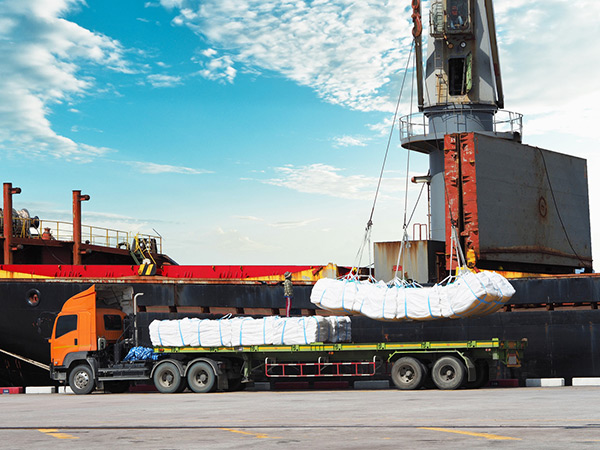Overview of Sugar Industry
White sugar ICUMSA 45 is a highly sought-after type of refined sugar in the global market. Here are some benefits and key aspects related to its volume sold globally, technical process, and uniqueness:
High demand: ICUMSA 45 sugar is in high demand globally due to its premium quality and versatility in various industries, such as food and beverage, pharmaceuticals, and confectionery.
Wide global distribution: ICUMSA 45 sugar is produced and exported by several countries around the world, including Brazil, Thailand, India, and others. This wide distribution ensures a steady supply and availability in the global market.
Quality assurance: ICUMSA 45 sugar undergoes a strict refining process that ensures a high level of purity and whiteness. The ICUMSA standards serve as a quality assurance measure, allowing buyers to have confidence in the product they are purchasing.
Technical process: The production of ICUMSA 45 sugar involves multiple steps, including extraction of sugar cane or sugar beet juice, purification, clarification, crystallization, centrifugation, drying, and packaging. These processes ensure the removal of impurities and result in a refined, white sugar product.
Unique characteristics: ICUMSA 45 sugar stands out for its exceptional brightness and whiteness. The low ICUMSA value (45) indicates its superior quality and purity compared to sugars with higher ICUMSA values. This makes it particularly desirable for applications where a visually appealing white appearance is important.
International trade and volume: ICUMSA 45 sugar is extensively traded on the international market. The volume of ICUMSA 45 sugar sold globally is substantial, with millions of metric tons being exported and imported each year.
Commodity pricing: ICUMSA 45 sugar is subject to global commodity pricing, influenced by factors such as supply and demand, crop yields, weather conditions, and geopolitical events. This can result in fluctuations in the price of ICUMSA 45 sugar in the global market.
In summary, the benefits of white sugar ICUMSA 45 include its high demand, wide global distribution, quality assurance, technical refining process, unique characteristics, significant volume in global trade, and its role in commodity pricing.
History
The history of white sugar ICUMSA 45 can be traced back to the development of the International Commission for Uniform Methods of Sugar Analysis (ICUMSA) and the need for standardized methods of analyzing and specifying sugar quality.
ICUMSA was established in 1897 with the aim of creating uniform methods for sugar analysis across different countries. The commission brought together scientists, researchers, and industry experts to develop standardized procedures for measuring various parameters of sugar, including color, purity, and crystalline structure.
The ICUMSA color scale was introduced to classify the color of sugar, with ICUMSA 45 being one of the classifications representing the highest level of whiteness and purity. The lower the ICUMSA number, the whiter and more refined the sugar is considered to be.
The development of ICUMSA 45 sugar can be attributed to advancements in sugar refining techniques. Over time, sugar producers refined their processes to remove impurities, such as minerals, pigments, and non-sugar components, to achieve a higher level of whiteness and purity in the final product.
ICUMSA 45 sugar gained popularity in the international market as a premium quality sugar due to its bright white color, low impurity content, and versatility in various applications. It became a preferred choice for industries such as food and beverage, confectionery, and pharmaceuticals, as well as for direct consumption.
Today, ICUMSA 45 sugar is produced and exported by several sugar-producing countries, with Brazil being one of the largest producers and exporters of this type of sugar. It continues to be a widely traded commodity in the global market, with its quality standards maintained and regulated by ICUMSA.
The history of white sugar ICUMSA 45 is closely tied to the development of sugar analysis standards, advancements in refining processes, and the growing demand for high-quality refined sugar in various industries.
Refining Process
 The refining process for Sugar ICUMSA 45 involves several steps to remove impurities and achieve a high level of purity and whiteness. Here is an overview of the typical refining process:
The refining process for Sugar ICUMSA 45 involves several steps to remove impurities and achieve a high level of purity and whiteness. Here is an overview of the typical refining process:
Extraction: The process begins with the extraction of sugar cane or sugar beet juice. The harvested cane or beets are crushed to extract the juice containing sugar.
Purification: The extracted juice undergoes purification to remove insoluble impurities such as dirt, plant fibers, and other solids. This is typically done through a process of filtration and sedimentation.
Clarification: The clarified juice is then subjected to a process called clarification. This involves the addition of chemicals, such as lime or carbon dioxide, to help remove any remaining impurities. The juice is heated, and impurities form a sediment that can be separated.
Crystallization: The clarified juice is concentrated by evaporation to a supersaturated state, where sugar crystals can form. Seed crystals or previously crystallized sugar are added to initiate the crystallization process.
Centrifugation: The resulting sugar crystals are separated from the mother liquor (molasses) through centrifugation. The centrifuge spins rapidly, separating the sugar crystals from the molasses by their difference in density.
Drying: The separated sugar crystals are then dried to remove any remaining moisture. This is typically done using hot air or a vacuum dryer, depending on the specific process.
Packaging: The dried sugar crystals are finally packaged into bags or other containers for distribution and sale. The packaging is often designed to maintain the quality and prevent moisture absorption.
Throughout the refining process, quality control measures are in place to ensure the sugar meets the ICUMSA 45 specifications, including its whiteness and low impurity content. These measures include regular sampling and testing to assess color, purity, and other parameters.
It’s important to note that specific refineries may have variations in their processes, but the general steps outlined above are common in the production of Sugar ICUMSA 45.
